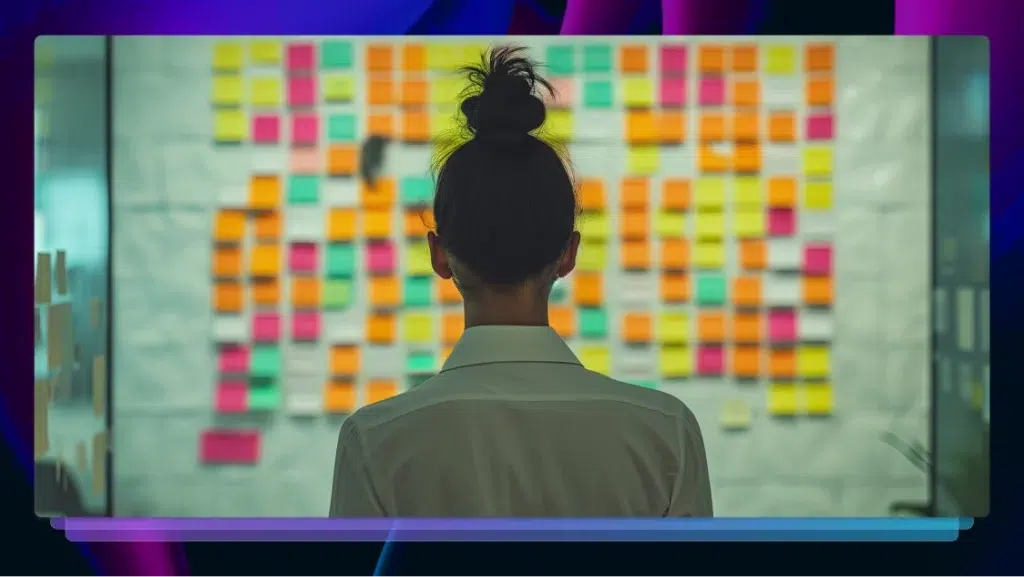How Much Does Knowledge Loss Cost Your Business? And How Can Speech Tech Help?
Here we explore the problem of knowledge loss and how to retain knowledge across your enterprise to save your company both time and money.

Knowledge loss is a concern at any company. Employee turnover is inevitable. And when turnover happens, businesses face a difficult challenge: How can they quickly rebuild the knowledge that just walked out the door?
A staggering 42% of institutional knowledge resides solely with individual employees, meaning their departures can leave organizations unable to handle nearly half of what they did. While it can be impossible to recoup that knowledge if you haven’t put tools in place, you can rebuild your team and, by extension, your knowledge base. But rebuilding takes time—writing job descriptions, interviewing candidates, and onboarding new hires can all take weeks—and time is money.
So what can you do? Let’s explore more deeply the problem of knowledge loss and look into solutions that can retain knowledge across your enterprise and save time and money.
What is Knowledge Loss?
Knowledge loss refers to the loss of knowledge within an organization or project when individuals leave or when knowledge is not effectively shared and retained. This knowledge loss problem is not just limited to turnover. Given the sheer volume of meetings and data packed into today’s professional world, it’s no wonder why so many businesses lose track of important details. Faithfully transcribing whole meetings rarely happens and notes for an important meeting often get lost. Notes aren’t always written down correctly, or they’re forgotten over time or they just aren’t easy enough to find within a digital maze of documents.
How Much Does Knowledge Loss Cost Businesses?
The cost of these knowledge gaps quickly adds up. A recent IDC study revealed companies lose $31.5 billion annually due to poor knowledge sharing. According to the Panopto Workplace Knowledge and Productivity Report, a firm with 1,000 employees can expect to lose $2.4 million in productivity annually due to day-to-day inefficiencies caused by knowledge loss, and a firm with 30,000 employees might expect to lose $72 million annually.
Learn how to boost your productivity at work with our guide.
How Speech Tech Bridges the Gap
Clearly, the stakes are too high for companies to ignore this problem. But fostering a space for knowledge transfer requires more than just hoping employees have the time and inclination to document everything. That’s where speech technology can help bridge the gap.
Speech tech goes beyond efficiency. It encourages knowledge sharing by making it easy to create a collaborative, innovative hybrid work environment without the added burden of taking notes in every meeting. When people can easily share their expertise—so it’s recorded, transcribed, and instantly summarized—the organization becomes a hub of accessible knowledge.
Consider a longtime employee with deep, unspoken expertise about their company. They know it all: the procedures honed through trial and error, the problem-solving tactics developed over the years, and the informal best practices. Not to mention an understanding of complex systems, industry-specific nuances, and past solutions that new hires won’t match for years to come. What happens if that employee leaves or retires?
In a recent Iterators poll, 60% of participants said it was difficult or almost impossible to get essential information from their colleagues. When knowledge isn’t shared, productivity plummets. New hires take time to learn the ropes, leading to decreased output and wasted resources. Their lack of historical context and knowledge makes companies vulnerable to mistakes that can damage their reputation and lead to loss of business.
How Rev’s Speech Tech Stops Knowledge Loss
Speech tech addresses that problem head-on, equipping companies with tools for knowledge transfer not through documents and written notes, but through innovative platforms that capture and understand your company’s conversations and provide actionable insights.
Rev’s transcription subscription provides easy ways to document and synthesize data from meetings, wherever they occur. Rev’s mobile app means teams always have a recorder on hand so in-person meetings in a coffee shop can be recorded (and transcribed) as easily as those done on the computer. If a business works remotely, Rev’s Zoom integration guarantees that meetings are transcribed easily and accurately, with automatic speaker names and almost immediate turnaround times.
With these tools on hand, teams can start building a vault of information for their business. This kind of shared, in-depth knowledge base ensures companies don’t just preserve information. They foster a culture of continuous learning and collaboration.
Subscribe to The Rev Blog
Sign up to get Rev content delivered straight to your inbox.



